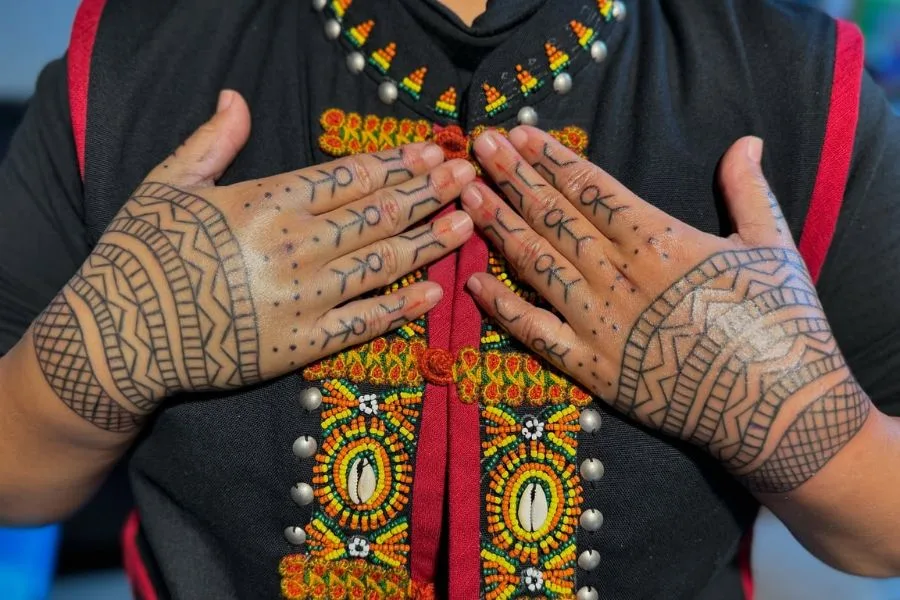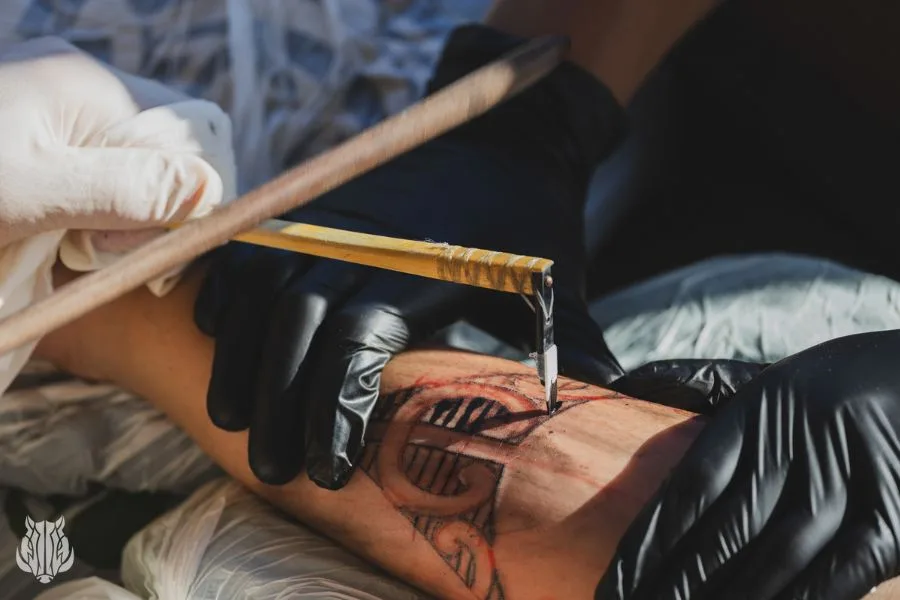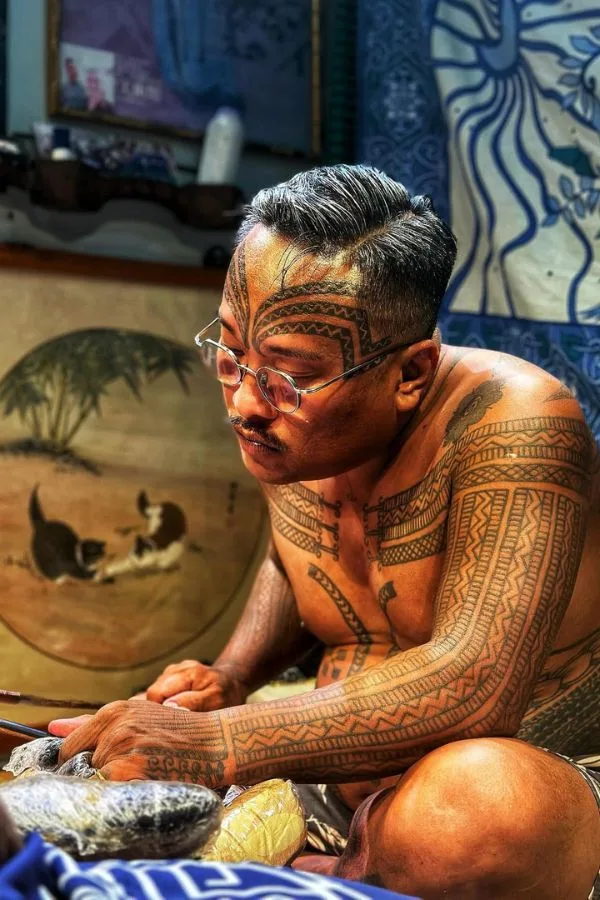Tribal Codes Imprinted on the Body
As the homeland of the Austronesian peoples, Taiwan has long embraced hand-tapping tattoo culture, an integral part of Indigenous social structures and identity. This traditional technique, which involves tapping ink into the skin, preserves ethnic historical memories and symbolizes social hierarchy and spiritual beliefs. However, during the Japanese colonial period, the practice was banned, and modern influences further pushed this precious culture to the brink of extinction. Fortunately, with the support of the Taitung County Government, initiatives like the Tattoo Waves Festival have created opportunities for this traditional craft to be reborn.

(Photo credit: Cudjuy Patjidres )
Cultural Totems: More Than Just Patterns
Among the Paiwan people, hand-tapping tattoos are symbols of social status, courage, and beauty. Different tattoo designs represent various social identities and family heritage.

(Photo credit: Taiwan PASIWALI Festival )
Those of higher status often have patterns representing human figure, hundred-pace vipers or the sun tapped onto their bodies, while commoners typically bear square or diamond-shaped geometric designs.
Tattooing also follows a strict gender distinction. Men typically have tattoos on their chest and back, symbolizing strength and the blessings of ancestral spirits, while women can only tattoo from the back of their hands to the elbows, with designs that change based on age and childbirth status. According to a Taitung County Cultural Affairs Department study, more than 50 documented Paiwan tattoo patterns have been identified, each carrying specific cultural meanings.
A Journey Inspired by an Old Photo
The revival of hand-tapping tattoo culture in Taitung owes much to Cudjuy Patjidres (Sung Hai-hua), a Paiwan tattooist who rediscovered this art form through an old Japanese book containing photographs of Paiwan tattooed elders. This discovery ignited his passion for Indigenous tattoo culture.
Hand-tapping tattooing requires the use of both hands—one for drawing the lines and the other for tapping the ink into the skin—a technique that demonstrates both skill and deep cultural connection. In 2015, Cudjuy traveled to New Zealand to participate in an international tattoo convention, where he met Hawaiian tattoo master Keone Nunes. Their exchange revealed that hand-tapping tattooing, which had long disappeared from Paiwan culture, was still being practiced in Hawai’i and other Austronesian communities. This encounter became a pivotal moment for the revival of hand-tapping tattoo culture in Taiwan.
Tattoo Waves Transcend Borders
In November 2024, the National Museum of Prehistory in Taitung hosted the Tattoo Waves Festival, inviting hand-tapping tattooists from Hawai’i, New Zealand, Papua New Guinea, Sarawak, and Taiwan. The event attracted over 850 participants, 42% of whom were non-Indigenous, highlighting the growing appeal of hand-tapping culture beyond Indigenous communities. Inspired by Cudjuy, more tattooists have begun conducting workshops, teaching younger generations the art of hand-tap tattooing.

(Photo credit: Cudjuy Patjidres )


(Photo credit: Taitung County Government)
Alongside the festival, the Voices of the Ocean: International Austronesian Music Residency in Taitung took place, featuring Filipino traditional dance workshops, Tahitian bark cloth making, and other cultural exchange activities. These events enriched the overall experience, strengthening connections between Austronesian communities through music and art.

(Photo credit: Taiwan PASIWALI Festival )

(Photo credit: Taiwan PASIWALI Festival )
Mapping Out the Future, One Tap at a Time
Currently, 12 active hand-tapping tattooists in Taiwan represent seven different Indigenous groups. Their shared vision is the “One Tribe, One Tattooist Initiative”, aiming to train at least one tattooist per Indigenous group with an ancestral tattoo tradition.
Using the human body as a canvas, hand-tapping tattoos are more than just decoration—they are symbols of cultural identity and ethnic memory. As more young people join this movement, what was once a fading tradition is now experiencing a powerful revival in Taiwan’s Austronesian homeland, breathing new life into an ancient art form.




